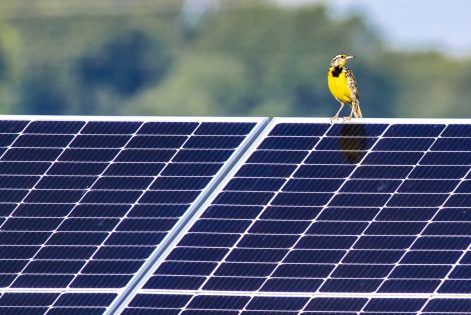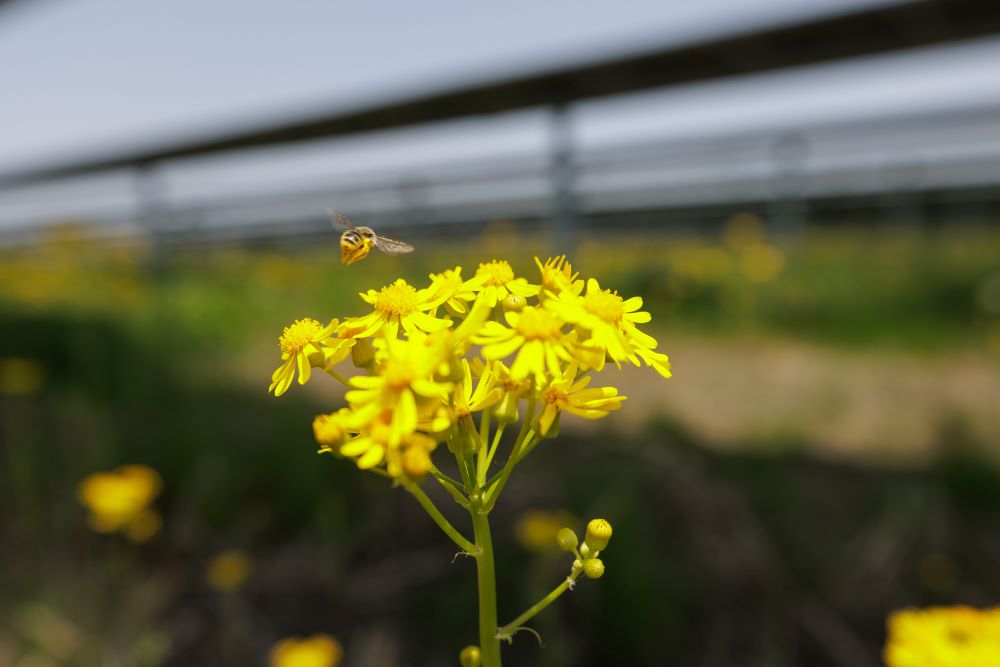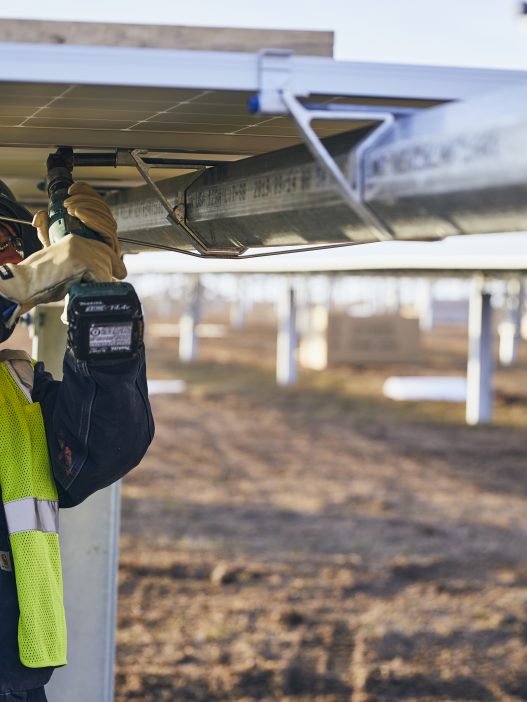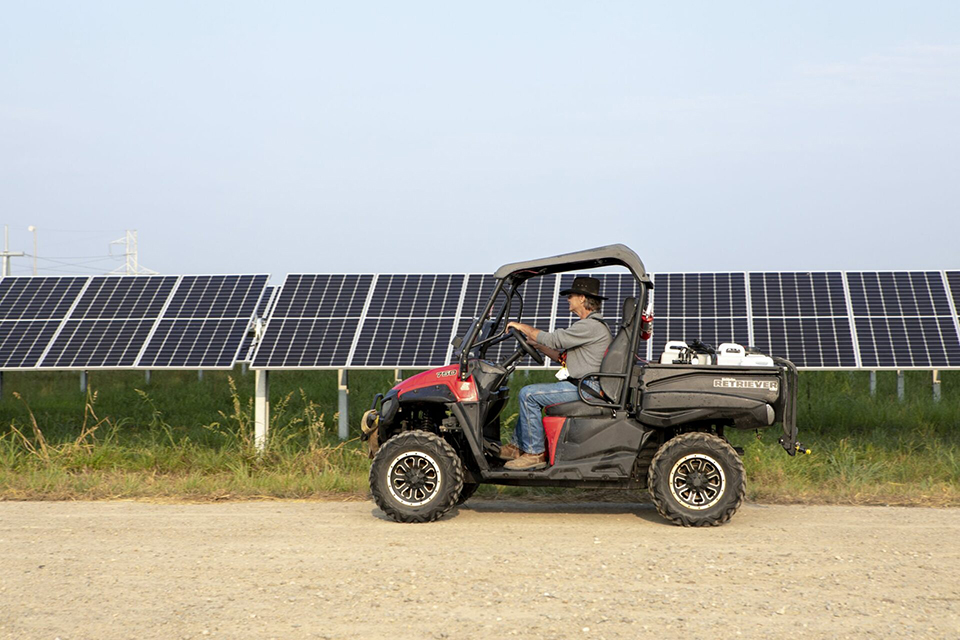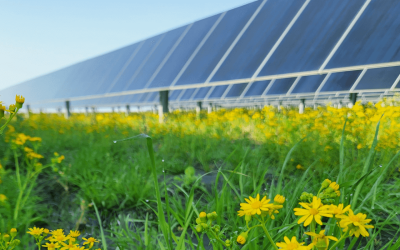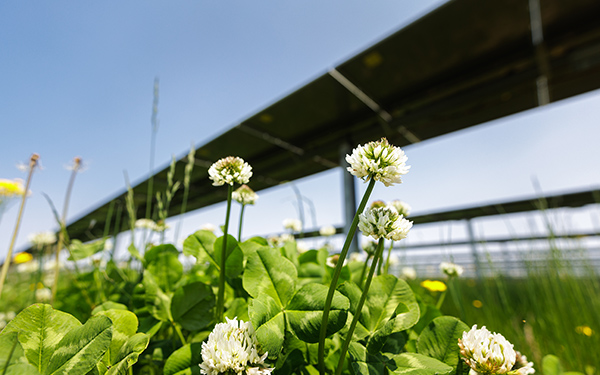Arche Solar | 134MW in Ohio
About the Arche solar project
The 134 megawatt Arche project is in full commercial operation in Gorham Township, Ohio, The privately funded renewable energy project is delivering emissions free electricity into the local grid, helping with Ohio’s energy independence, resilience, and energy security.
Construction of Arche Solar began in October 2022, and the project reached commercial operation in January 2024. The project includes ultra-low carbon solar panels and smart solar trackers from U.S.-based manufacturers First Solar and Nextracker, respectively.
The solar farm is delivering home-grown, clean energy to Meta under a power purchase agreement. Solar energy delivers long-term price stability, decoupled from fuel price volatility.
Arche Solar will provide a stable, long-term economic benefit to the Fayette area. The Fayette Local School District, Gorham Township and Fulton County will benefit from increased tax revenues paid throughout the project life. Arche Solar will provide $32 million in revenue to benefit local schools and other public services, without raising taxes to local families. It will deliver a predictable and steady $802,500 per year to the Fayette area. Additionally, Arche Solar is projected to generate enough clean energy to power the equivalent of 20,700 homes, while creating tangible benefits for the local community and environment.
134MWdc
/107MWac of home-grown renewable energy
156,000 metric tons
carbon emissions abated each year
200
jobs created during construction, supporting local labor and supply chains
$32 million
dollars to local government agencies in revenue over the project's lifetime
80% +
In-state local labor hired during construction
Site Selection & Preliminary Design
Stakeholder outreach
Permitting & environmental studies
Land management & biodiversity planning
Final engineering, financing & construction
Operation & maintenance
Decommissioning & recycling
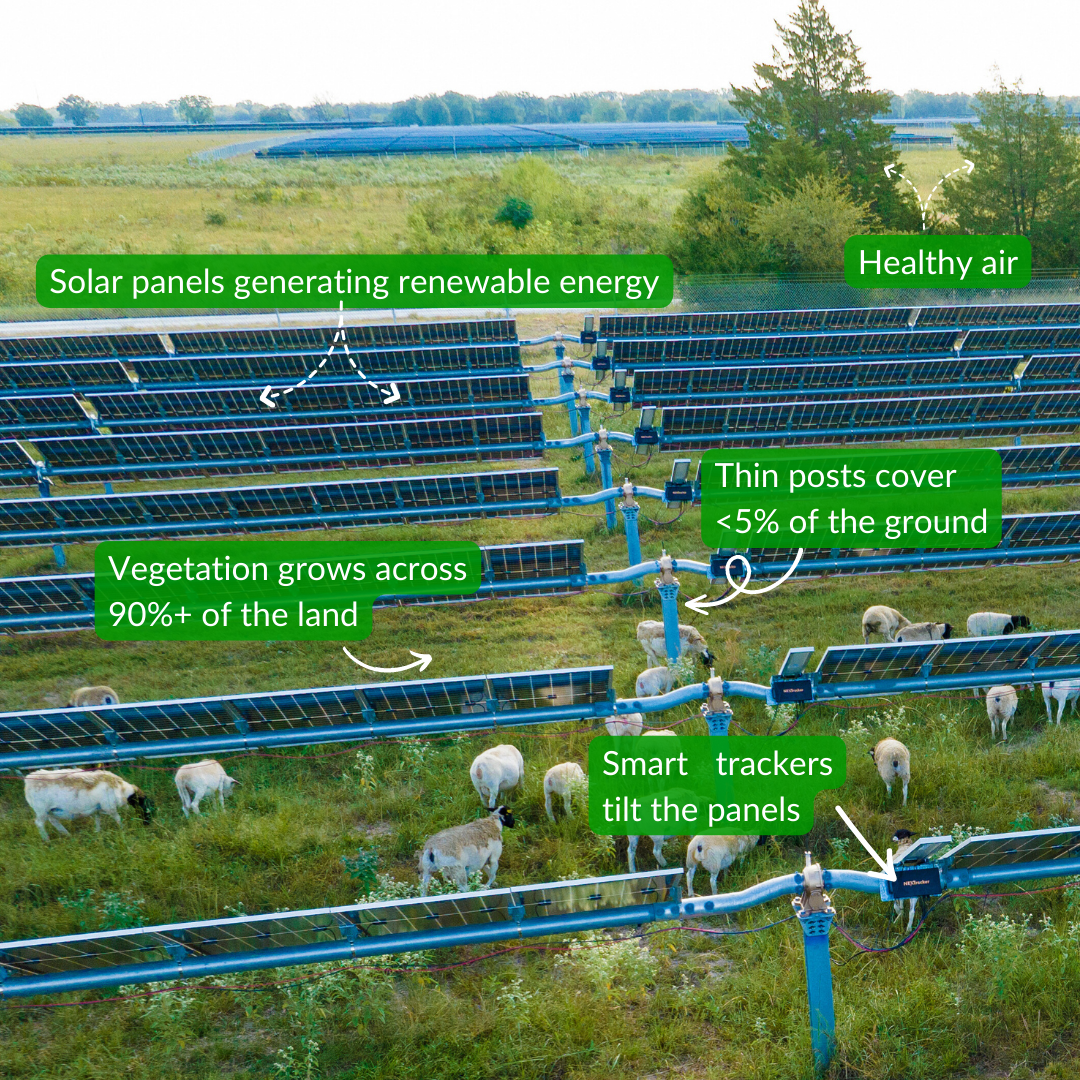
How solar farms work
Solar farms add energy to the local electric grid, just like other electric power plants. Rows of solar panels produce the electricity, which flows through the grid to power places like homes, businesses, schools and hospitals.
Solar panels are mounted on structures called racking. Racking sits on posts that raise the panels above the ground, on posts that take up less than 5% of the land. With significant open space under the panels, in the rows and in buffer areas to plant site-specific grasses and other vegetation, we set a goal of increasing biodiversity in the first 5 years of operation. We also integrate agriculture where practical.
The racking is equipped with smart solar trackers that slowly and quietly rotate throughout the day, following the sun to maximize solar energy production. These smart trackers serve other important purposes, too: they help protect solar panels from hailstorms, high winds and buildup of snow on solar panels.
Community dialogue – we want to be a good neighbor
Lightsource bp is dedicated to supporting communities that are home to our solar projects across America. That’s why we have an entire Community Relations team that works closely with our neighbors to maximize the positive social impacts of our projects
To connect with a Community Relations Manager please email USCommunityRelations@lightsourcebp.com.
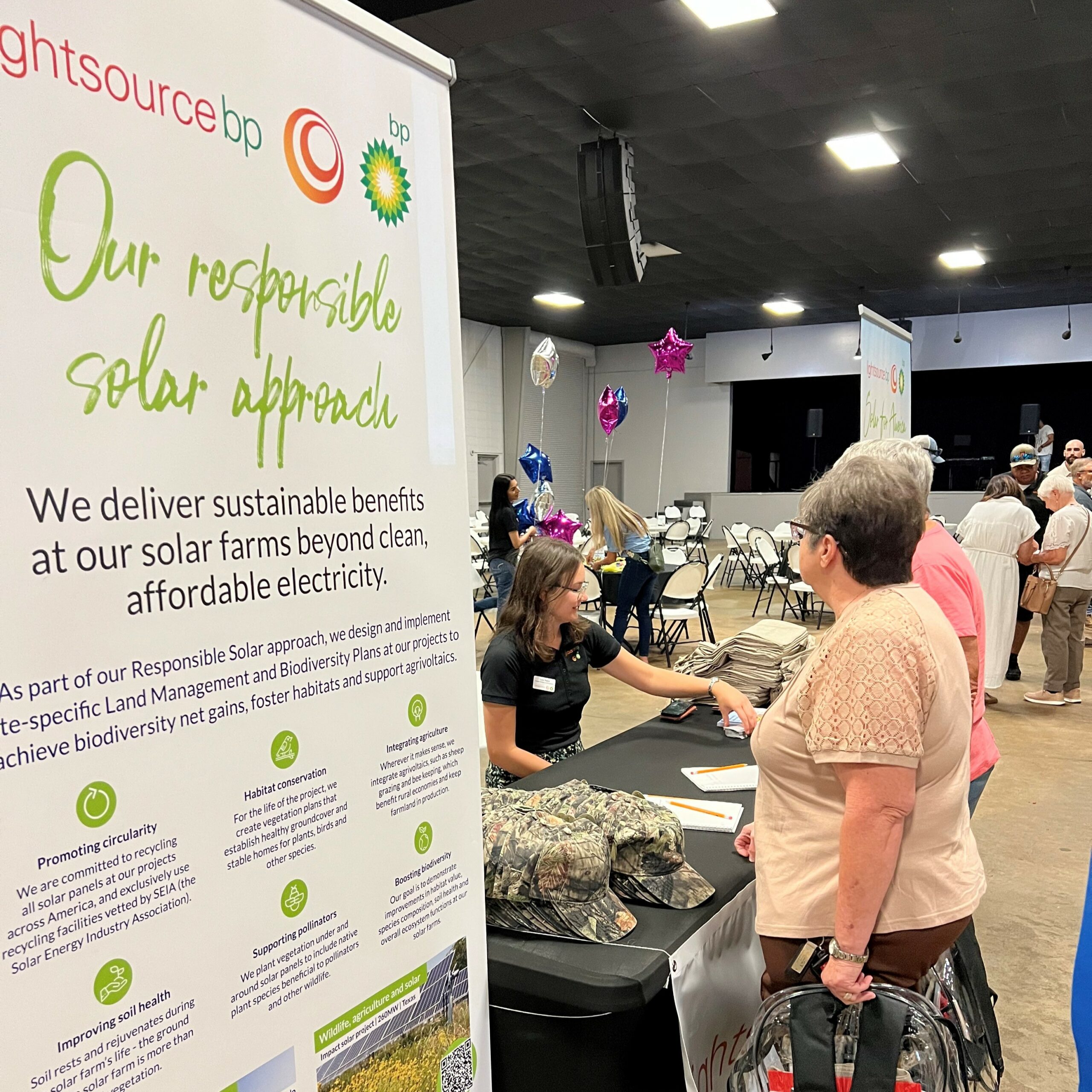
Making a local impact
A solar farm is so much more than energy production. It can boost biodiversity on the land. It can provide new tax revenue to your community. It’s a new, year-round type of harvest for your neighbor farmers that helps them keep their land for future generations.
A solar farm is so much more than energy production. It can boost biodiversity on the land. It can provide new tax revenue to your community. It’s a new, year-round type of harvest for your neighbor farmers that helps them keep their land for future generations.
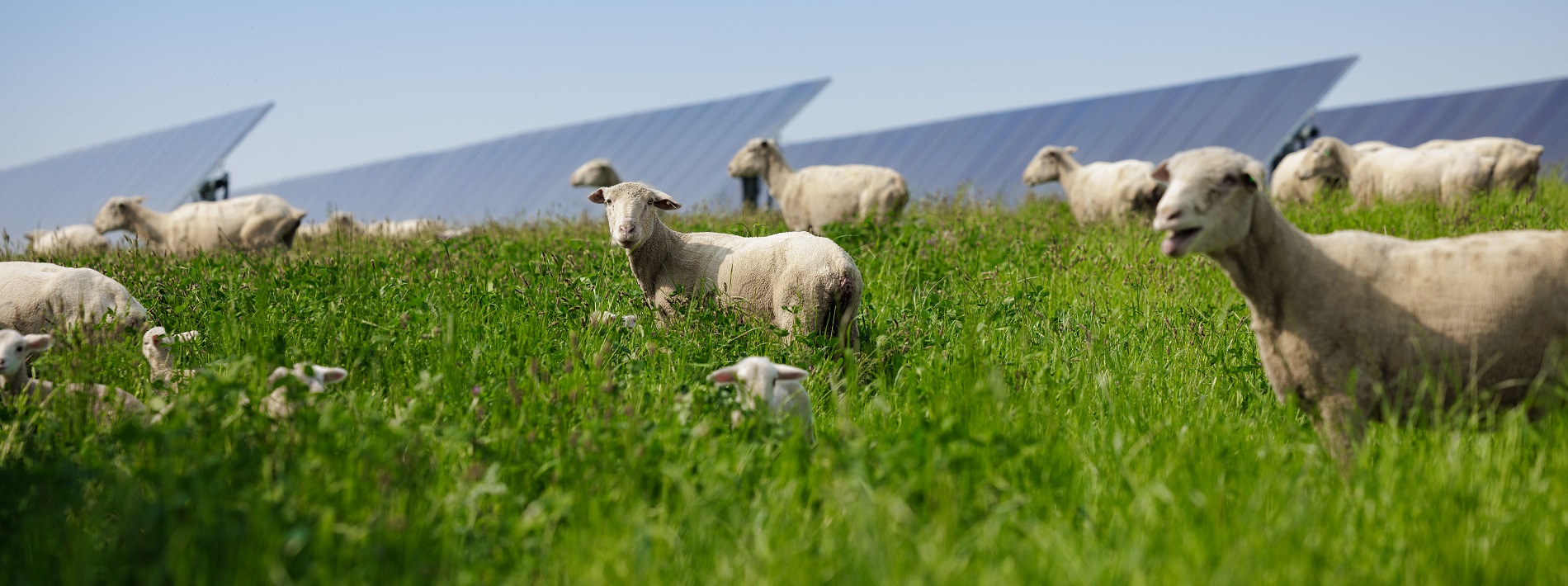
Long-term benefits
In addition to generating affordable, clean energy for Ohio’s electrical grid, development of the land with home-grown solar energy has several additional long-term benefits, including:
- Rest and regeneration of the land during the project’s life, improving soil health and preserving it for future use.
- Healthy groundcover under and around the panels that boosts local biodiversity, creating a stable, long-term home for plants, pollinators, birds and other wildlife.
- Opportunity for integrated agriculture such as sheep grazing or bee keeping.
- Rural resilience through continued local ownership of the land.
- Energy security and independence from foreign sources of fuel.
- Healthier air quality by generating electricity with no polluting carbon dioxide emissions.
Economic growth for the community
The Arche Solar project represents a significant capital investment into home-grown, affordable energy for Ohio, using private funding. This opens many doors for economic growth, including:
- Throughout the life of the project, $32+ million in new revenue for local government agencies will be generated, benefitting local school systems and many other community public services – without an increase in taxes to local residents.
- 200 jobs were created during peak construction of the project, utilizing more than 80% local Ohio subcontractors and local labor.
- Lightsource bp is committed to supporting philanthropic activities and charitable donations to local organizations.
Our Responsible Solar approach
Lightsource bp has a deep commitment to delivering safe, clean and affordable energy, as well as maximizing the environmental sustainability and positive social impacts of each of our projects. We call this approach Responsible Solar. We pay attention to every detail, from the fencing we choose to the vegetation we plant. We want our Arche Solar farm to be a great project for the local community.
In developing and constructing the project, we have implemented our best practices for solar farm development, including:

Environment and aesthetics
- Planting new trees and other vegetation between the solar panels and public view where needed for screening and to provide habitat for local wildlife.
- Designing setbacks from nearby property lines and public roads.
- Installing an agricultural game style fence, consistent with the local aesthetic of the area, around the project as opposed to industry-standard chain link fencing.
- Planting vegetation under and around the solar panels, with a seed mix customized for the local area in order to increase biodiversity and improve soil health.
Upkeep and decommissioning
- Making sure appropriate drainage and traffic mitigation are provided during construction.
- Budgeting for consistent maintenance and upkeep of the facility.
- Committing to recycling all solar panels: Lightsource bp has a zero landfill policy for solar panels.
- Preparing a full decommissioning plan to ensure that the project will be removed at the end of its life.
Responsible Solar Stories
Find out more about our Responsible Solar approach in action.
Researching the benefits of pollinator conservation at Bellflower Solar
Habitat enhancement in Indiana
Information and resources
We’ve put together a collection of resources for anyone who’d like to know more about utility-scale solar energy.
Solar farm FAQs
We’ve put together a list of the most commonly asked questions, and their answers.
Solar energy basics
National Renewable Energy Lab (NREL)
Lightsource bp educational materials
Solar panel safety and recycling
Get in touch
If you’d like to find out more about this project, email USCommunityRelations@lightsourcebp.com, call (628) 529-4069 or fill out the form below. We aim to get back to you within five working days.
If you are a member of the media, please visit our Press Center.
